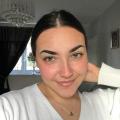
The first results of the 2021 census are in – and they show south Essex has seen its population swell over the last decade.
The census takes place every 10 years, with every household in the UK required to take part.
The latest snapshot of England and Wales was captured on March 21 2021.
The census is crucial for the UK’s statisticians to understand how our population is changing, and plays a vital role in how our public services and government operate.
Now the first results have been released – and there’s been a rise in the number of people living in all areas in south Essex.
Read more >>> Best and worst rated GPs in Southend area according to patient reviews
Here are the results for each area:
Southend
On census day, 180,700 people were living in the area – up 4 per cent from 173,658 in 2011, when the last census was carried out.This also means the population density has grown to 4,336 usual residents per square kilometre, up from 4,167 in 2011.
It shows the balance of men and women in the area has changed – Southend’s population is now 48.6 per cent male and 51.4 per cent female, meaning there is now a higher proportion of women in the area than 10 years ago.
In 2011, people living in Southend were 49 per cent male and 51 per cent female.
It also shows the area is aging – a decade ago the population was made up of 11.9 per cent under-10s and 17.7 per cent over-65s.
This had changed to 11.7 per cent and 19.1 per cent respectively by 2021.
Historic populations of Southend:
- 1981: 155,815
- 1991: 158,517
- 2001: 160,259
- 2011: 173,658
- 2021: 180,700
Basildon
On census day, 187,600 people were living in the area – up 8 per cent from 174,497 in 2011, when the last census was carried out.
This also means the population density has grown to 1,705 usual residents per square kilometre, up from 1,586 in 2011.
It shows the balance of men and women in the area has stayed the same since 2011 – Basildon’s population is 48.5 per cent male and 51.5 per cent female, close to what it was 10 years ago.
Read more >>> Aldi reveals Essex wishlist for new store locations, plus a finder's fee
It also shows the area has seen a rise in the proportion of both young children and the elderly – a decade ago the population was made up of 12.6 per cent under-10s and 16 per cent over-65s.
This had changed to 13.2 per cent and 17 per cent respectively by 2021.
Historic populations of Basildon:
- 1981: 151,999
- 1991: 161,124
- 2001: 165,665
- 2011: 174,497
- 2021: 187,600
Castle Point
On census day, 89,600 people were living in the area – up just 2 per cent from 88,011 in 2011, when the last census was carried out.
This also means the population density has grown to 2,006 usual residents per square kilometre, up from 1,970 in 2011.
It shows the balance of men and women in the area has changed – Castle Point’s population is now 48.3 per cent male and 51.6 per cent female.
Read more >>> New state-of-the-art £16 million veterinary hospital to open this summer
This means there is now a higher proportion of women in the area than 10 years ago.
In 2011, people living in Castle Point were 48.8 per cent male and 51.2 per cent female.
It also shows the area has seen a rise in the proportion of both young children and the elderly – a decade ago the population was made up of 9.7 per cent under-10s and 21.6 per cent over-65s.
This had changed to 10.2 per cent and 25.2 per cent respectively by 2021.
Historic populations of Castle Point:
- 1981: 85,328
- 1991: 86,560
- 2001: 86,613
- 2011: 88,011
- 2021: 89,600



Comments: Our rules
We want our comments to be a lively and valuable part of our community - a place where readers can debate and engage with the most important local issues. The ability to comment on our stories is a privilege, not a right, however, and that privilege may be withdrawn if it is abused or misused.
Please report any comments that break our rules.
Read the rules hereLast Updated:
Report this comment Cancel